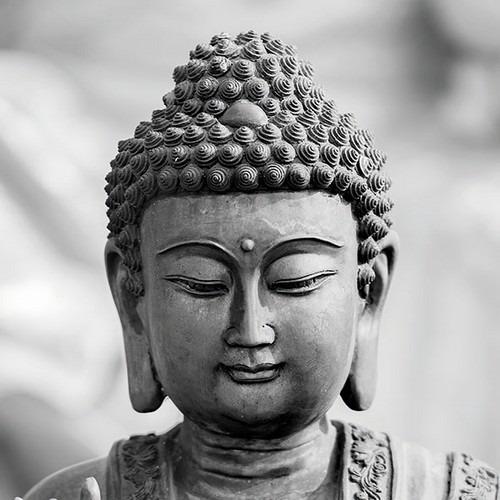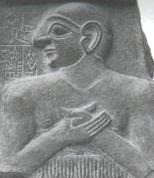Historical roots of zen

This document can be acquired from a sub-directory coombspapers via anonymous FTP and COOMBSQUEST gopher on the node COOMBS.ANU.EDU.AU
The document's ftp filename and the full directory path are given in the coombspapers top level INDEX file.
Date of the document's last update/modification 03/09/93
--------------------------------------------------------
HISTORICAL ROOTS OF ZEN
original filename: zenisnot.txt
--------------------------------------------------------
This file is the work of Stan Rosenthal. It has been placed here, with his kind permission, by Bill Fear. The author has asked that no hard copies, ie. paper copies, are made.
Stan Rosenthal may be contacted at 44 High street, St. Davids, Pembrokeshire, Dyfed, Wales, UK. Bill Fear may be contacted at 29 Blackweir Terrace, Cathays, Cardiff, South Glamorgan, Wales, UK. Tel (0222) 228858 email fear@thor.cf.ac.uk. Please use email as first method of contact, if possible. Messages can be sent to Stan Rosenthal via the above email address - they will be forwarded on in person by myself - B.F.
NOTE: You may find and odd sentence or missing information every now and again in the files. Hopefully not to frequently. This is because the files were originally written on a machine using CP/M and had to be converted to dos format. Many of the 5.25 disks were very old and had bad sectors - thus missing info.
Historical roots of zen
Much has already been written of Zen from within a Buddhist context, but Zen itself is not the prerogative of any specific religious group, even though in its modern form, a large proportion of its practitioners are drawn from followers of the Buddha, Guatarma Siddhartha. Historically of course, Zen probably owes its major debt to its Buddhist practitioners for their systemization of its concepts, and even more than this, it must be remembered that the founder, or first codefier of Zen, The Boddhidharma, was also the twenty-eighth Buddhist patriarch in direct teaching descent from the Buddha himself.
However, in any serious discussion of Zen, we must also recall that something relating to the development of Zen did occur during the four hundred years prior to 526 CE, when the Boddhidharma arrived in the Shao-lin Temple in the Hohan Province of Northern China, to codefy Zen practice during his prolonged meditation, now know as 'the nine years before the wall'. What occurred during the four hundred year period preceding the arrival of the Boddhidharma in China was that following the establishment of Shao-lin as a major, and possibly the first, Buddhist Temple in China in 100 CE, there was a considerable dialogue between the Buddhist monks who inhabited the temple, and many of the people who were indiginous to the area, and who called themselves Taoists; a fact which is hardly surprising considering that the temple was previously a Taoist retreat.
At this point, it will probably help to clarify a number of issues if we understand that even by 100 CE there has developed two forms of Taoism, the earliest Tao-chia, being philosophical Taoism based upon Yin Yang theory as explained in the esoteric theory of 'changes' ('I Ching') and in the later work, 'the Way of Virtue' ('Tao Te Ching') by the philosopher Lao Tzu who lived towards the end of the Period of the Warring States (c 600 BCE). The later form of Taoism known as Tao-chiao, although based upon its philosophical precedessor, was practiced as a religion rather than a philosophy, and made considerable use of both shamanistic and mystical religious practices, bordering on the occult, and by 100 CE the followers of religious Taoism far outnumbered the philosophical Taoists.
It is probable that by the beginning of the Christian era in the West, the philosophical Taoists had lost their influence, and continued their work only in remote regions, far from the large cities and seats of government. We know with certainty that by this time religious Taoism held considerable influence in what was, by now, the Chinese kingdom or empire. It was to the remote provinces that the remaining followers of philosophical Taoism had travelled, and so it probably was that it was in such areas as these that the dislohur between Mahayana Buddhism and Taoist Philospphy began. It was the Buddhist monks, practising the compassion for which many Buddhist sects are still reknowned, who gave succour to the 'exiled' Taoist philosphers, who in turn shared their knowledge with their Buddhist benefactors.
So it is that it is now believed that on his arrival at Shao-lin, the Boddhidharma found something quite foreign to the Indian practice of Buddhism, strange but not alien. It was to prove to be the Boddhidharma's undertaking to codify the synergized practices he discovered, but even scant knowledge of the life of the Buddha himself provides a clue as to why the philosophy of Taoism would not have been completely foreign to the Boddhidharma, and would certainly not have been unknown to the Buddha himself.
It is well documented that the Prince, Guattama Siddhartha, spent many years as a peripatetic seeker prior to his enlightenment, and many of his conversations with 'wise men' are described in detail. Since trade had taken place between China and India for many hundreds of years before the birth of the Buddha, trade routes were of course well established, and it is more than likely that young seeker would have used such routes, not only as a means of travel, but also in order to meet with strangers to his own land. As it the case even today, much can be learned about foreign ideas, philosophies and customs through trading in artifacts, and many goods are decorated with the symbols indiginous to their place of origin. With such a brilliant intellect as we know Guttama Siddhartha possessed, it is indeed unlikely that he would not have learned of 'Yin Yang' theory, upon which Taoist philosophy is based. Zen Buddhist scholars themselves acknowledge many instances in which Buddhist ideas are concommitant with those of Taoist philosophy, but there will probably always be an element of disagreement regarding which school of thought borrowed most from the other.
All this is not to deny the Buddhist element in any form of Zen, but only to illustrate that Zen is not wholly Buddhist, nor wholly Taoist. For many Zen practitioners there is indeed no dichotomy, nor any need for distinction. But it is only fair to all concerned to point out that to many non-Zen Buddhists even Zen Buddhism is a heresy and to state that many Buddhists belonging to non Zen sects, time and energy spent in Zen practice is considered to be of little or no significance. For their own part, many Zen practitioners consider their orthodox Buddhist bretheren to be 'brothers in spirit', but are disapproving towards the hierarchical rigor with which their more orthodox brothers consider the Buddhist deities, and with which the orthodox Buddhist institutions are organized.
I am fully aware that I have not described what Zen is, but have hopefully illustrated that whatever it is, it is not orthodox, not essentially a religion, and not specifically Indian. It is possibly necessary to provide one more negation, and this is that contrary to much public opinion in the Europe and the USA, Zen is most certainly not Japanese in origin.

























